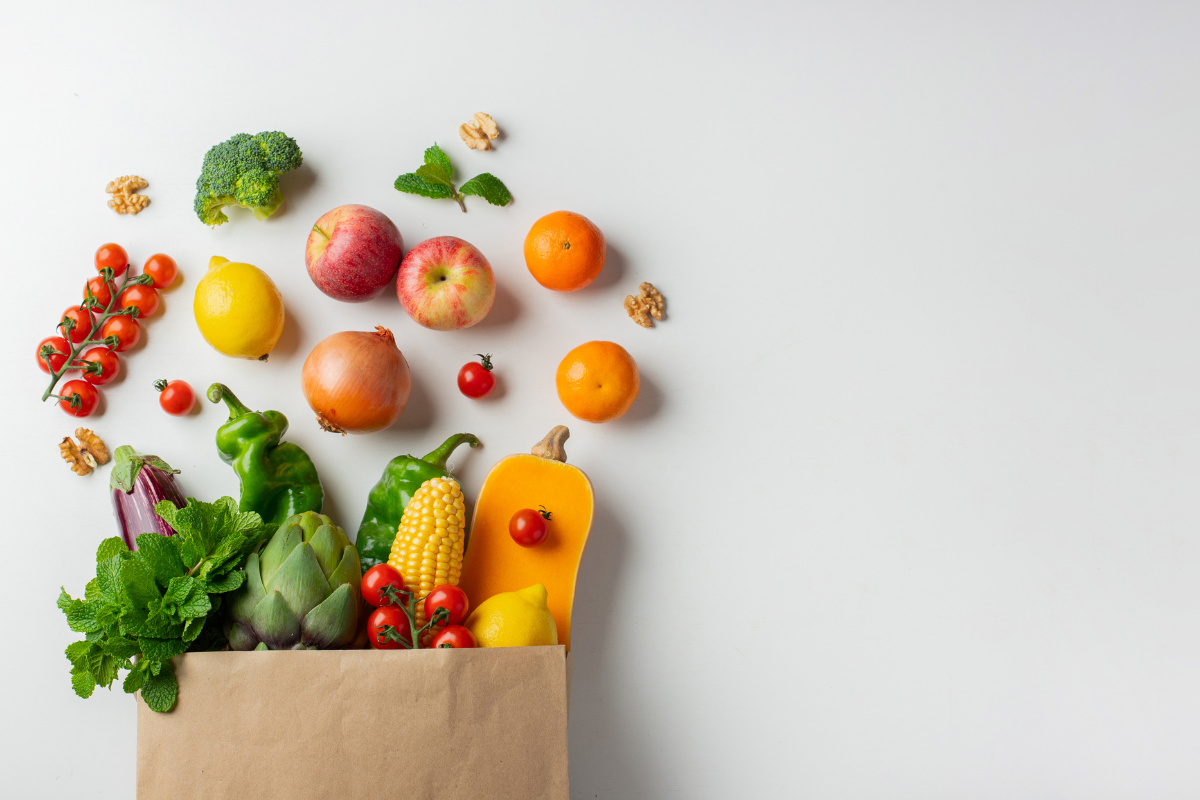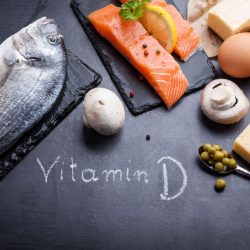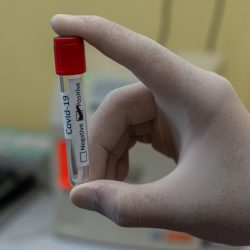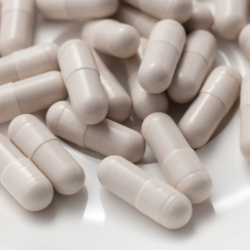These days, our flagging spirits need immediate attention. The news and the grey, gloomy weather are taking their toll on our vitality and our eating habits, which inevitably leads to a lowering of the immune system.
What is vitalism?
Vitalism is the principle of vital energy. The more positive our thoughts, the greater our vital energy. The psyche modifies our terrain by varying the production of hormones and antibodies.
The more positive our vital energy, the more defensive substances and endorphins we secrete, reducing pain by releasing internal tensions. Conversely, the more negative it is, the less we secrete and the more disease has free rein.
That’s why filling up on vitamins and trace elements is one of the best ways to offset our low morale, boost the immune system and possibly reduce the complications of Covid-19 infection.
Vitamins and trace elements are therefore essential for our bodies to function properly!
Vitamin D
Vitamin D or calciferol is a fat-soluble vitamin. It is a hormone found in food and synthesised in the human body from a cholesterol derivative under the action of the Sun’s UVB1 rays.
In humans, it exists in two forms: D2(ergocalciferol) produced by plants or D3(cholecalciferol) of animal origin.
During the winter months (and even more so with previous successive confinements and teleworking), when vitamin D synthesis is naturally reduced due to shorter days, less sunlight and lower skin exposure, acute lower respiratory tract infections are more frequent, in both adults and children. ” Vitamin D is thought to play an important role in regulating the immune system, and can potentially protect against infections. Its supplementation could reduce the incidence and deleterious effects of these conditions”, says the WHO. A study published on 27 October 2020 in the Journal of Clinical Endocrinology & Metabolism showed that patients hospitalised with a Covid-19 infection were more often vitamin D deficient.
Vitamin D and coronavirus:
A Spanish study published on 27 October 2020 in the Journal of Clinical Endocrinology & Metabolism shows that among 216 people hospitalised because of the Coronavirus, 82% were vitamin D deficient. According to the researchers, “the best approach should probably be to identify and treat vitamin D deficiency, particularly in high-risk individuals such as the elderly, patients with co-morbidities, and residents of nursing homes”.
They found no relationship between vitamin D concentrations or vitamin D deficiency and disease severity, including mortality, but believe that large randomised controlled trials will be “necessary to define precisely the role of vitamin D supplementation in future waves of Sars-CoV-2”. In April, during the first epidemic wave, a preliminary study published on medrxiv showed that people deficient in vitamin D had a 15% greater risk of developing a severe form of Covid-19 disease and twice the risk of death than people who were not deficient. According to the authors, vitamin D reduces the severity of COVID-19 by suppressing the cytokine storm (responsible for the inflammatory process) in COVID-19 patients.
What food sources are available?
- Butter and margarine
- Fish oil or oily fish such as herring, sardines, salmon or mackerel (vitamin D3) – (two portions a week)
- Mushrooms
- Cereals
- Offal, especially liver
- Egg yolks
- Dairy products, particularly those fortified with vitamin D
- Cheese
- Meat
B vitamins
B vitamins are involved in many roles, such as energy production and the proper functioning of the nervous system. Most B vitamins are not stored by the body in sufficient quantities.
B complex vitamins have two main functions, directly linked to physical and mental performance. An adequate intake of B vitamins is important to ensure optimal energy production.
Vitamins B1, B2, B3, B5, B6 and B8 are involved in energy production. Vitamins B9 and B12 are necessary for the production of red blood cells, protein synthesis, cell regeneration and the maintenance of central nervous system (CNS) function.
To be at your best, you need to ensure that your body has a sufficient supply of B vitamins. In fact, it has been established that an inadequate intake of B vitamins impairs mental performance, which can cause fatigue and impair your vitality.
Vitamin B2 :
Vitamin B2, riboflavin or lactoflavin is a water-soluble vitamin. This organic substance is necessary for the body, as it facilitates the conversion of simple foods into energy and also plays a role in stimulating the immune system. The daily requirement for adults is 1.5 to 1.8 mg per day.
It is found mainly in the following food sources:
- Offal (liver, kidneys, heart)
- Organic egg yolk
- Dairy products
- Fish
- Vegetables
- Spinach
- Asparagus
- Broccoli
- Yeast
- Cereals
- Sprouts
Vitamin B3 :
Vitamin B3, PP, niacin or nicotinamide is like vitamin B2; one of the constituents of certain coenzymes involved in many cellular processes.
Among other things, it is involved in stimulating energy, and also prevents inflammation and depression (which is a plus for our vitality). This vitamin is synthesised by our intestinal flora from tryptophan (an amino acid). The usual recommended daily dose is 6 to 8 mg/litre of blood.
It is found mainly in the following food sources:
- Offal (liver, kidneys, heart)
- Egg yolk and dairy products
- White meat
- Fish
- Yeast
- Tomatoes
- Mushrooms
- Cereals
- Dried vegetables
- Figs
- Dates
- Plums
Vitamin B5 :
Vitamin B5, pantothenic acid or panthenol, is the essential constituent of coenzyme A and is involved in the metabolism of carbohydrates, lipids and proteins. It is a natural anti-stress agent, which is good for our vitality.
Most foods contain it:
- Yeast
- Wholemeal flours
- Organic eggs
- Mushrooms
Vitamin B6 :
Vitamin B6, pyroxine, pyridoxine, pyridoxamine, pyridoxal, adermine or vitamin G, is involved in the metabolism of proteins (especially tryptophan) and lipids.
It helps prevent certain types of depression and is also produced by our intestinal flora.
It is mainly found in the following food sources:
- Offal (kidneys, heart, liver)
- Yeast
- Peas
- Spinach
- Broccoli
- Cabbage
- Mushrooms
- Fish
Vitamin C
Vitamin C or L ascorbic acid plays an important role in the synthesis of structural proteins and many hormones. It is also a food additive: E300 (antioxidant).
It is involved in a number of areas, including promoting iron absorption and bacterial immunity. It also prevents infections and all types of viral diseases.
It is mainly found in the following food sources:
- Citrus fruits
- Lemon
- Sea buckthorn
- Apples
- Blueberries
- Blackcurrant
- Tomatoes
- Parsley
- Lettuce
Magnesium
Magnesium citrate is a mineral salt that plays a very important role in many intracellular enzymatic reactions. It is also involved in the neuromuscular transmission of nerve impulses. It is often regarded as a natural ‘anti-stress agent’. An adult’s body contains around 25g of this mineral, more than half of which is found in the bones and the rest mainly in the muscles.
For children, as for adults, the recommended intake is 6 mg per kilo of weight per day.
For example:
- 120 mg per day for a child weighing 20 kilos
- 360 mg per day for a woman weighing 60 kilos
- 420 mg per day for a man weighing 70 kilos
To this base must be added:
- 25 mg per day for adolescents, given their rapid growth: for example, for a 60 kg adolescent, the recommended intake is 360 25, or 385 mg per day
- 40 mg per day for pregnant women. For example, 400 mg per day for a woman weighing 60 kilos at the start of her pregnancy
- 30 mg for breast-feeding women. For example, 390 mg per day for a woman weighing 60 kilos
It is found in the following food sources:
- Apricot
- Chocolate
- Grapefruit
- Seaweed
- Vegetables
- Fish
Iron
Iron is a trace element that is essential to the body, playing a part in many chemical reactions and, among other things, enabling oxygen to be transported by the haemoglobin in red blood cells. The iron atom is integrated into many proteins, often within a particular structure called a heme. Biochemists distinguish between proteins that carry heme(s) or heminases (haemoglobin, myoglobin, cytochromes, peroxidases, catalases) and non-heme proteins such as ferritin and haemosiderin.
A 70kg man’s body contains around 4g of iron, and a 60kg woman’s, 2.5g. It is mainly absorbed in the small intestine.
The body cannot synthesise iron and must therefore obtain it from food sources. Nature being well done, when the body’s iron reserves decrease, its absorption rate increases.
Iron plays a key role in the functioning of the immune system.
It can be found in the following food sources:
- Seaweed
- Cocoa
- Oilseeds
- Offal
- Red meat
- Fish
Copper
Copper is a trace element that is essential for many enzymes. In particular, it is involved in the fight against infection. It is present in the human body in very small quantities, around 100 mg in an adult. Copper also contributes to the formation of the immune system.
All foods contain copper, but the richest are :
- Offal (liver)
- Seafood
- Nuts
- Cocoa
- Poultry
- Dried vegetables
- Whole grain foods
- Brewer’s yeast (to supplement intake)
- Seaweed
- Oysters
- Mushrooms
Minerals and trace elements are essential for the body to function properly. The ideal is to consume them at every meal, selecting foods according to their contribution. In this way, you can vary your meals and still cover all your needs. The quantity of minerals is very high, while that of trace elements is lower. But they are essential for transporting nutrients and vitamins throughout the body. A healthy, varied diet provides sufficient quantities of minerals and trace elements.
Sources :
- Front Nutr. 2024; 11: 1375449. Long COVID: nutrition and lifestyle changes
- Nutrients. 2022 Mar; 14(6): 1305. Dietary Recommendations for Post-COVID-19 Syndrome







